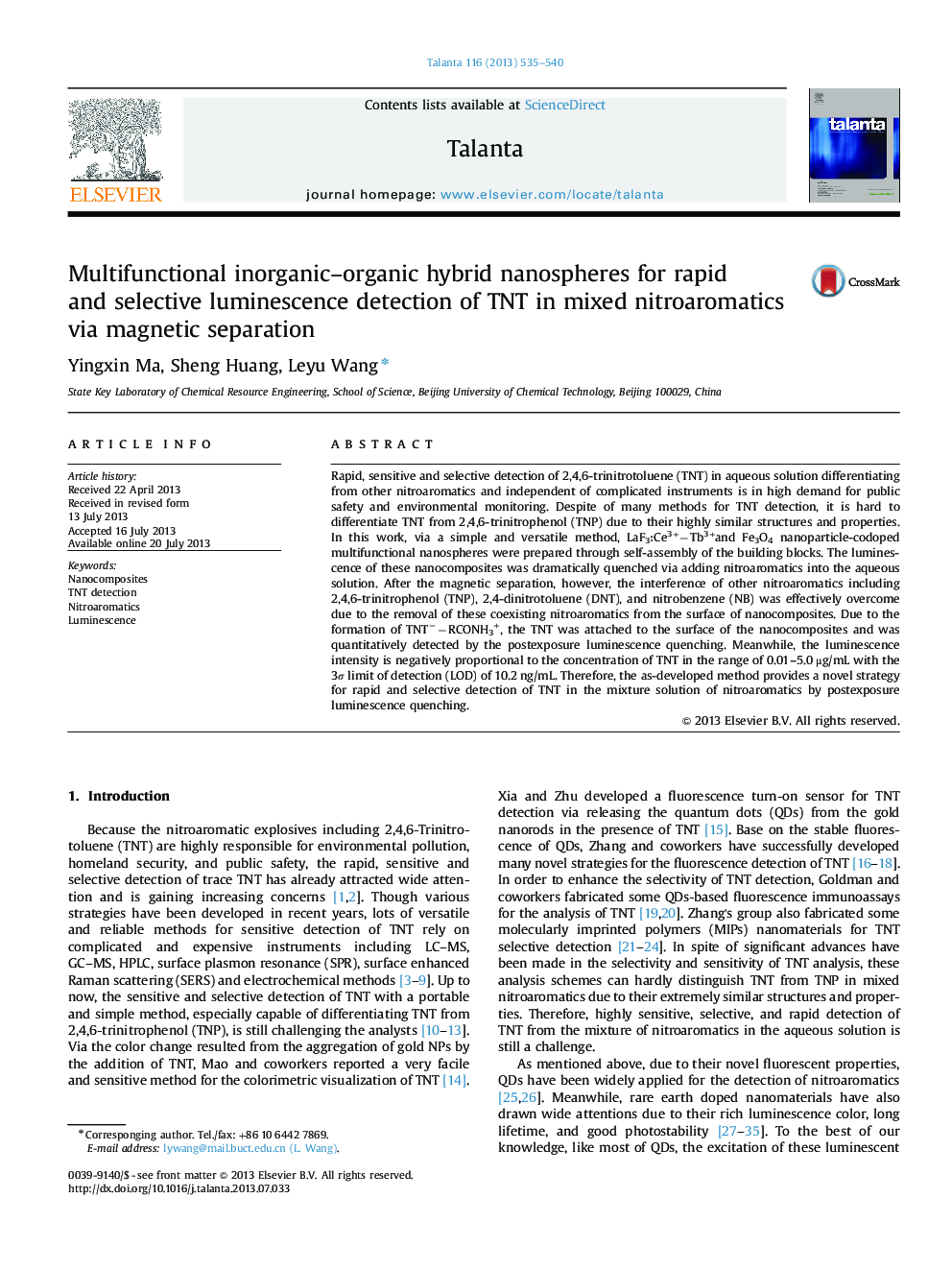| Article ID | Journal | Published Year | Pages | File Type |
|---|---|---|---|---|
| 7683020 | Talanta | 2013 | 6 Pages |
Abstract
Rapid, sensitive and selective detection of 2,4,6-trinitrotoluene (TNT) in aqueous solution differentiating from other nitroaromatics and independent of complicated instruments is in high demand for public safety and environmental monitoring. Despite of many methods for TNT detection, it is hard to differentiate TNT from 2,4,6-trinitrophenol (TNP) due to their highly similar structures and properties. In this work, via a simple and versatile method, LaF3ËCe3+âTb3+and Fe3O4 nanoparticle-codoped multifunctional nanospheres were prepared through self-assembly of the building blocks. The luminescence of these nanocomposites was dramatically quenched via adding nitroaromatics into the aqueous solution. After the magnetic separation, however, the interference of other nitroaromatics including 2,4,6-trinitrophenol (TNP), 2,4-dinitrotoluene (DNT), and nitrobenzene (NB) was effectively overcome due to the removal of these coexisting nitroaromatics from the surface of nanocomposites. Due to the formation of TNTââRCONH3+, the TNT was attached to the surface of the nanocomposites and was quantitatively detected by the postexposure luminescence quenching. Meanwhile, the luminescence intensity is negatively proportional to the concentration of TNT in the range of 0.01-5.0 μg/mL with the 3Ï limit of detection (LOD) of 10.2 ng/mL. Therefore, the as-developed method provides a novel strategy for rapid and selective detection of TNT in the mixture solution of nitroaromatics by postexposure luminescence quenching.
Related Topics
Physical Sciences and Engineering
Chemistry
Analytical Chemistry
Authors
Yingxin Ma, Sheng Huang, Leyu Wang,
